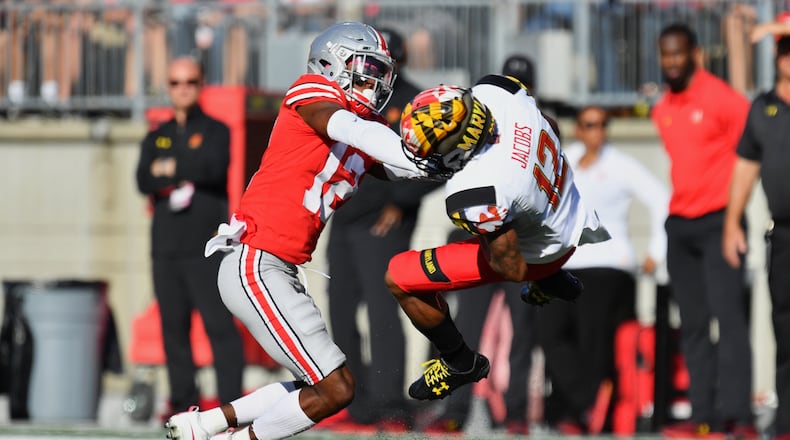This call appears to be incorrect for multiple reasons. It also exhibits all of the problems with the targeting rule as it is written and enforced.
First of all, the play should have been ruled a catch because the receiver brought in the ball, took multiple steps and began to turn upfield before he was hit.
That would mean Jacobs was defined as a runner who fumbled and Ohio State should have gotten the ball (Ward was headed to the end zone untouched when the whistle blew).
That ruling would also preclude a targeting call from being possible because Jacobs would no longer be considered “defenseless,” which means he can be hit legally in more ways.
A “defenseless” player can’t be hit “forcibly” in the head and neck area, per the poorly written targeting rule in college football.
Officials determined Ward was guilty of doing that, a conclusion that is questionable at best.
Hey how's everyone's Saturday goi...OH MY GOD pic.twitter.com/kbzoDxbqzD
— FOX College Football (@CFBONFOX) October 7, 2017
The contact appears to be to the chest, not the neck, which would make it legal even if Jacobs were still “defenseless,” and what exactly constitutes “forcible” contact has never been very well defined.
That an official missed this live is understandable. It was, as they say, a bang-bang play, and the way the rule is written quite honestly far more hits could probably be flagged than we see in the average game.
The replay official should have seen all of the issues with the calls and fixed them, though. That’s why we have replay.
And yet if the eye in the sky didn’t see anything wrong with those rulings, it could be because the ambiguousness of “forcible contact” including the neck area in the targeting rule language opens the door to far more things being illegal than should be.
Many hits involve the neck but not the head, so penalizing them the same has never made sense.
That language is also what leads to a lot of the confusion about the rule among not only fans and writers but even coaches and players.
READ MORE at Marcus Hartman’s “Cus Words Blog”
As long as the rule is written this way, confusion will continue to reign and questionable calls will not stop.
The immediacy of Ward being ejected is also a problem. We can’t be throwing players out of games without indisputable evidence it is warranted.
I am not against egregious high hits being cause for missed playing time, but if that is on the table, it needs to be determined after the game by a professional who has limitless time to make a decision.
Do I expect anything to change after another dreadful situation? No, because it was clear to me the first time I read the rule it can’t work well in practice.
That it was passed and endures anyway tells me the people making the rules don’t know what they don’t know.
About the Author

